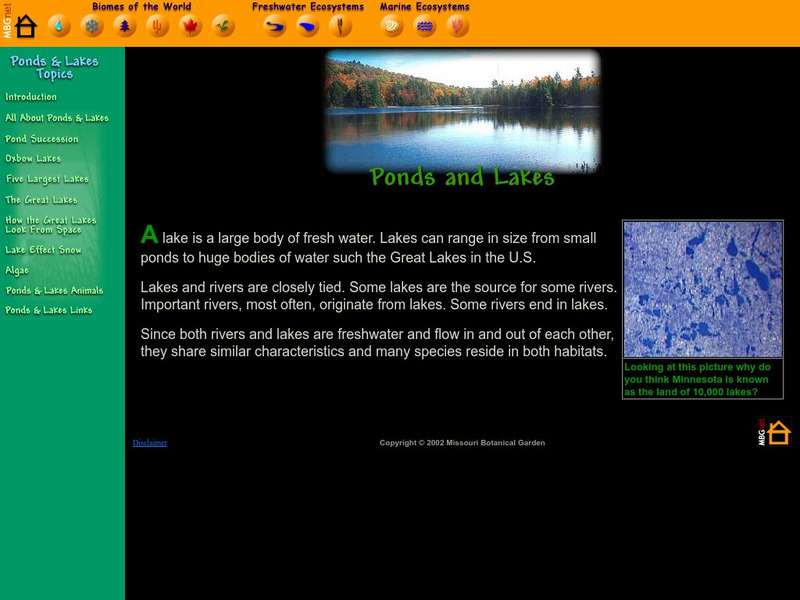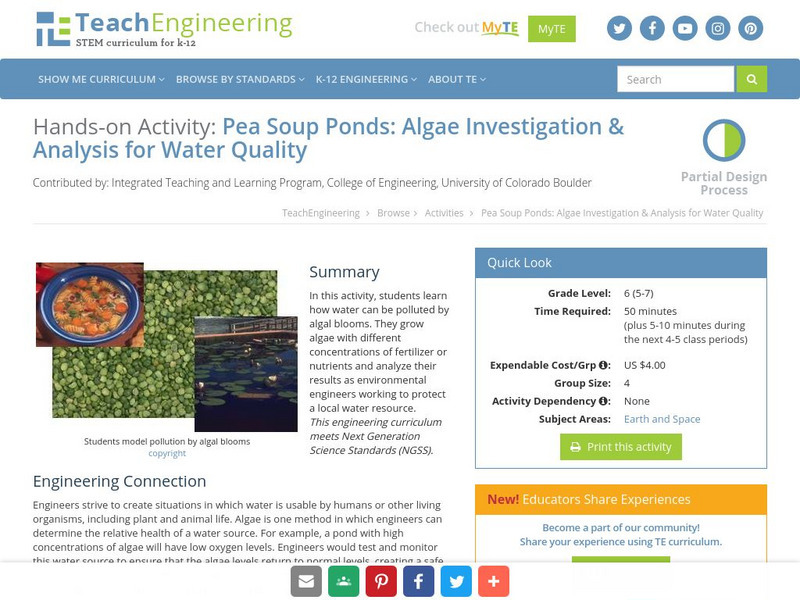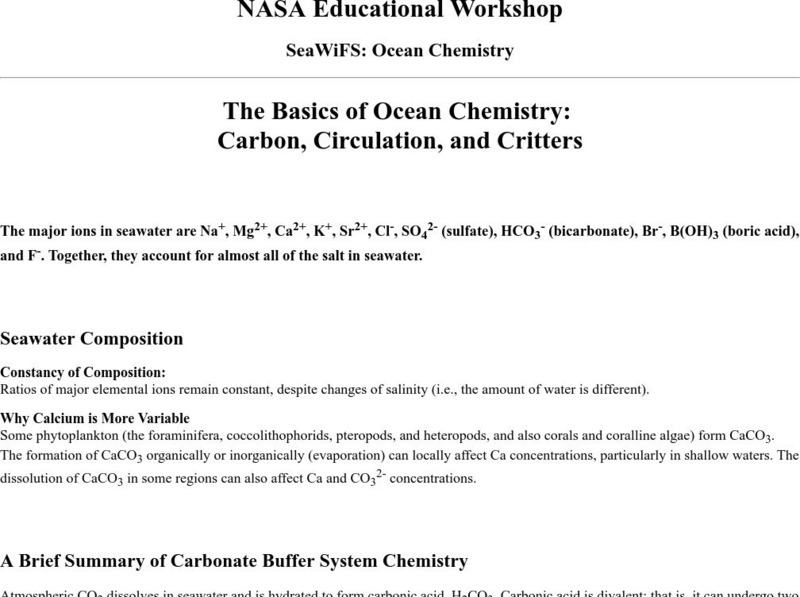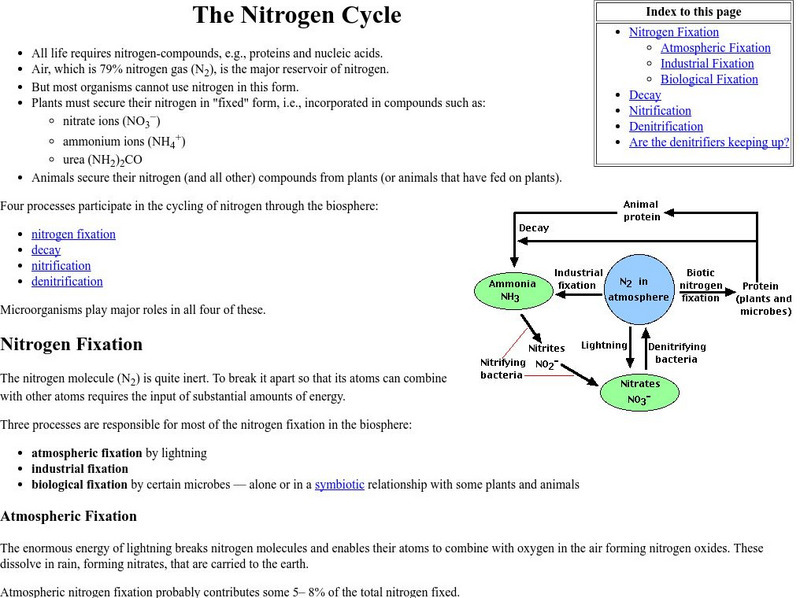NOAA
Noaa: Estuaries 101 Curriculum: Dissolved Oxygen in an Estuary
In this activity, students focus on the relationship between dissolved oxygen, plant growth, chlorophyll-a and temperature using SWMP water quality data from monitoring stations in the Narragansett Bay Estuarine Research Reserve and the...
National Geographic
National Geographic: Visualizing Watershed Health
Using data visualizations that show dissolved oxygen levels, students analyze the health of the Chesapeake Bay watershed. They will also learn about dead zones, which are aquatic areas where there is insufficient oxygen to support life....
Missouri Botanical Garden
Missouri Botanical Garden: Lakes and Ponds
This illustrated website features facts about lakes and ponds and their special place in geography, natural history, and as a biome.
Missouri Botanical Garden
Missouri Botanical Garden: Water Pollution
Water pollution occurs when a body of water is adversely affected due to the addition of large amounts of materials to the water. The sources of water pollution are categorized as being a point source or a non-source point of pollution....
NASA
Nasa: Creeping Dead Zones
Dead zones are popping up along coastlines all over the world. Find out what they are and the causes of this destructive phenomenon.
Other
Abiotic Factors
Abiotic components are the nonliving components of the biosphere. Chemical and geological factors, such as rocks and minerals, and physical factors, such as temperature and weather, are referred to as abiotic components.
TeachEngineering
Teach Engineering: Pea Soup Ponds
In this activity, students will learn how water can be polluted by algal blooms. They will grow algae with different concentrations of fertilizer or nutrients and analyze their results as environmental engineers working to protect a...
CK-12 Foundation
Ck 12: Life Science: Effects of Water Pollution
[Free Registration/Login may be required to access all resource tools.] Water pollutants can have an effect on both the ecology of ecosystems and on humans. As a result of water pollution, humans may not be able to use a waterway for...
NASA
Nasa: The Basics of Ocean Chemistry: Carbon, Circulation, and Critters
An explanation of ocean chemistry, supported by illustrations, for example, of the global carbon cycle in the 1980s and the annual carbon dioxide flux. The concentration of nutrients in the ocean is discussed for its impact on marine...
Science Education Resource Center at Carleton College
Serc: Duckweed Bioassay
This lab was designed with the intent to mimic the effect fertilizers can have on plants in a lake or pond ecosystem. Students determine the effect different fertilizer concentrations have on the growth rate of duckweed plants, as...
BBC
Bbc: Gcse Bitesize: Making Fertilizer
This lesson focuses on fertilizers including how they replace nitrogen, phosphorus and potassium in the ground; how the plants get the nutrients; a table showing examples of fertilisers, their formula, and the essential elements they...
Biology Pages
Kimball's Biology Pages: The Nitrogen Cycle
An overview of the nitrogen cycle, covering nitrogen fixation, decay, nitrification, denitrification, and more.
Mocomi & Anibrain Digital Technologies
Mocomi: Major Domains of the Earth Hydrosphere
Learn about the hydrosphere, the water cycle, the major threats to the hydrosphere, and environmental problems.
Other popular searches
- Eutrophication Worksheets
- Eutrophication Experiments
- Eutrophication Unit Plans
- Lesson Plans Eutrophication
- Artificial Eutrophication
- Cultural Eutrophication











